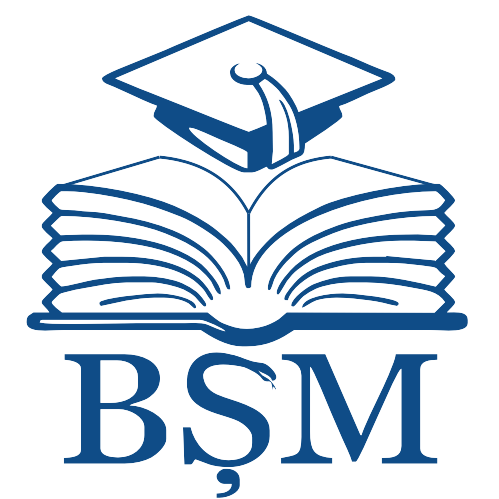|
|
- IRMS - Nicolae Testemitanu SUMPh
- 1. COLECȚIA INSTITUȚIONALĂ
- MATERIALE ALE CONFERINȚELOR ȘTIINȚIFICE
- „Cells and tissues transplantation. Actualities and perspectives. The 3rd edition” dedicated to the 80th anniversary of the founding of Nicolae Testemitanu State University of Medicine and Pharmacy. Chisinau, March 21-22, 2025
- The Materials of the National Scientific Conference with International Participation „Cells and tissues transplantation. Actualities and perspectives. The 3rd edition” dedicated to the 80th anniversary of the founding of Nicolae Testemitanu State University of Medicine and Pharmacy. Chisinau, March 21-22, 2025: [Abstracts]
Please use this identifier to cite or link to this item:
http://hdl.handle.net/20.500.12710/30473
| Title: | Regenerative medicine in liver diseases and cellular mechanism of liver regeneration and cell-based therapies |
| Authors: | Marcu, Beatrice
Sardari, Veronica |
| Issue Date: | 2025 |
| Publisher: | CEP Medicina |
| Citation: | MARCU, Beatrice and Veronica SARDARI. Regenerative medicine in liver diseases and cellular mechanism of liver regeneration and cell-based therapies. In: Cells and tissues transplantation. Actualities and perspectives. The 3rd edition : The Materials of the National Scientific Conference with international participation dedicated to the 80th anniversary of the founding of Nicolae Testemitanu State University of Medicine and Pharmacy. Chisinau, March 21-22, 2025: [abstracts]. Chişinău: CEP Medicina, 2025, p. 51. ISBN 978-9975-82-413-2. |
| Abstract: | Background. Liver transplantation remains the gold standard for end-stage liver diseases, but donor
shortages necessitate regenerative alternatives. Induced pluripotent stem cells (iPSCs), liver progenitor
cells (LSPCs), and hematopoietic stem cells (HSCs) represent a game-changer in liver regenerative
medicine. Although iPSCs can be used to produce patient-specific hepatocytes, drawbacks including
redifferentiation deficiency and tumorigenicity have not yet enabled their clinical application. This
study explores bioengineered liver constructs, focusing on decellularization/recellularization strategies
and bioprinting approaches as potential solutions to organ shortages.
Materials and Methods. A literature review was conducted, analyzing preclinical and clinical studies
on scaffold-based tissue engineering, whole-organ decellularization, and 3D bioprinting, from
PubMed, NCBI, Hindawi. Molecular pathways related to liver regeneration, hepatocyte differentiation,
and immune response modulation were examined.
Results. Liver tissue engineering employs two primary strategies: (1) Decellularization/recellularization of liver scaffolds and (2) 3D bioprinting of liver tissues. The decellularization
approach preserves the extracellular matrix (ECM) and vascular networks, facilitating cellular
repopulation. Experimental rat and pig models have demonstrated partial liver function restoration, yet
graft survival remains limited due to inadequate vascularization and long-term cell viability.
Bioprinting, leveraging 3D printing and bio-inks, offers an alternative pathway to generating structured
liver tissues. Researchers are working to address these challenges through advances in biofabrication,
microenvironmental control, and scaffold optimization. HLA-matched iPSC lines offer a potential
solution, with research suggesting that a small number of iPSC donors could match up to 90% of
recipients, paving the way for off-the-shelf bioengineered liver constructs.
Conclusions. The liver bioengineering and iPSC technology is reshaping regenerative medicine,
offering innovative solutions to address organ shortages. While fully functional liver constructs remain
a long-term goal, bioartificial liver devices and cell-based therapies offer near-term solutions for
bridging transplantation gaps. Future research should focus on enhancing iPSC differentiation
efficiency. |
| metadata.dc.relation.ispartof: | Cells and tissues transplantation. Actualities and perspectives. The 3-rd edition. Chisinau, March 21-22, 2025 |
| URI: | https://repository.usmf.md/handle/20.500.12710/30473 |
| ISBN: | 978-9975-82-413-2 |
| Appears in Collections: | The Materials of the National Scientific Conference with International Participation „Cells and tissues transplantation. Actualities and perspectives. The 3rd edition” dedicated to the 80th anniversary of the founding of Nicolae Testemitanu State University of Medicine and Pharmacy. Chisinau, March 21-22, 2025: [Abstracts]
|
Items in DSpace are protected by copyright, with all rights reserved, unless otherwise indicated.
|


